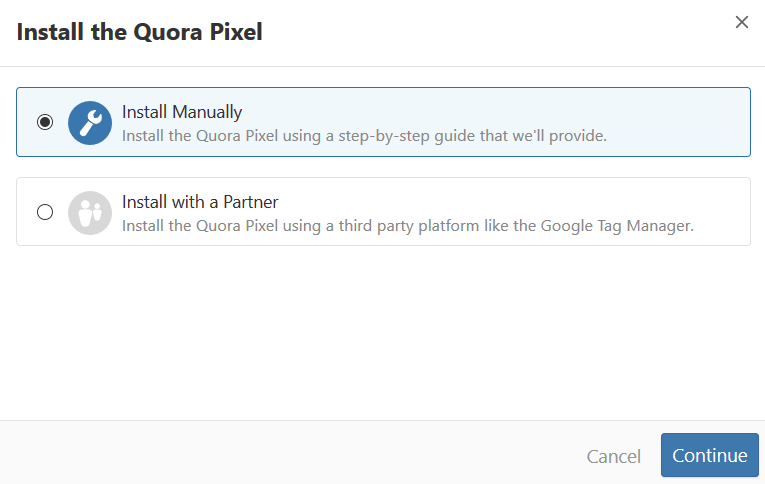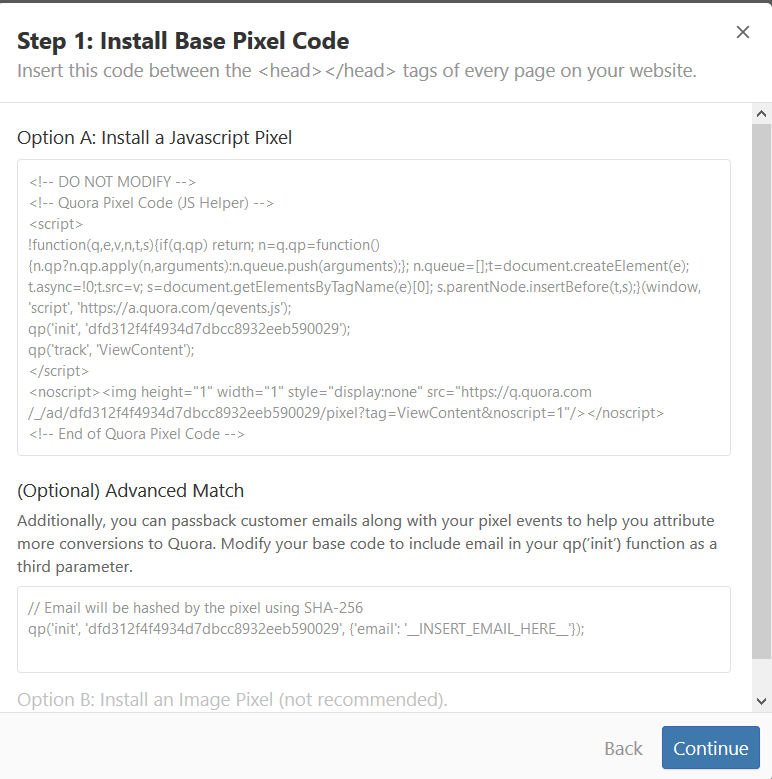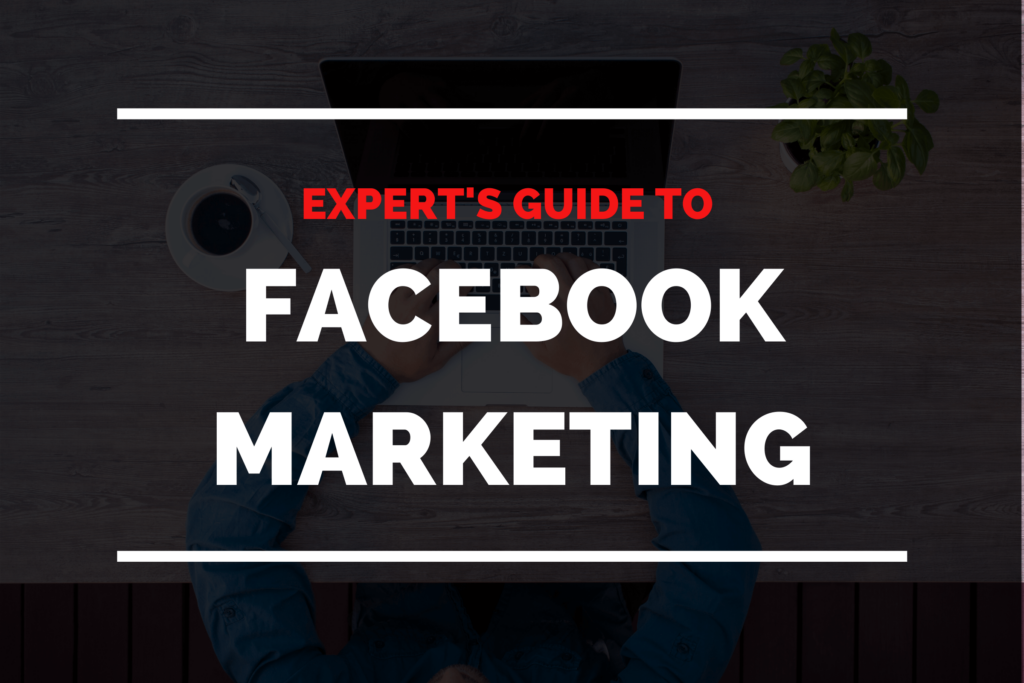
6 Proven Steps to Advertise on Quora Marketing In 2020 | Standout.Digital

Welcome to the latest and very easy to apply “Quora Marketing” Course, designed to take you by the hand and walk you through the process of getting the most out of Quora on behalf of your business.
I’m very excited to have you here, and I know that this will be very helpful for you.
This exclusive E-course will show you step-by-step, topic by topic, and tool by tool, what you need to know to dominate quora marketing, in the easiest way possible, using the most effective tools and in the shortest time ever.
This Quora Marketing E-course is comprised of 6 Steps, ready to show you the latest Quora Marketing strategies.
This Is Exactly What You Are Going To Learn:
- Setting up a Quora Ad campaign
- Setting Up A Traffic Campaign On Quora
- Setting Up A Remarketing Campaign On Quora
- Cross-Promoting Your Quora Content On Social
- Reviewing Your Performance On Quora
- Growing Your Business Through The Quora Flywheel
Setting up a Quora Ad campaign
Hey there! All marketers and business owners know that there’s an end to every organic marketing campaign, and that you need to advertise if you want to scale.
The good news is that Quora has a self-service advertising platform that allows you to run ads natively on their site, and in this course we are going to teach you how to create your first ad campaign on Quora.
Get Started By Joining Quora
For Business
Before you can start running ads on Quora, you will need to join their “Quora for Business” program. All you have to do is to visit the “Quora for Business” section at “quora.com/business”, and once there, to click on the “sign up” link, log in to your Quora account, and then to follow the registration steps.
Step 1: Creating A Campaign
Once you join “Quora for Business”, you will be able to create ad campaigns by signing in to your account, clicking on the profile icon, and then on the “ads manager” tab in the profile menu.
Now that you are in the ads manager dashboard, click on the “create campaign” button. On the following page you have to start by entering the name of your new campaign. Then you have to select your campaign objective. There are four objectives to choose from: “conversions”, “app installs”, “traffic”, and “awareness”.
For this example, we are going to select “awareness” so we can get more users to see and engage with one of our answers.
Next up you have to set your budget and duration. Start by setting your budget. You can set a “daily maximum budget” or a “lifetime budget” that stops your campaign when your budget is spent. For this example, we are going to enter a “daily maximum budget”.
Now it is time to set your schedule. You can select to “begin advertising immediately”, or you can select to “set a start and (optional) end date”. For this example, we are going to select to “begin advertising immediately”. You can click on “continue” after you configure all settings on this page to move on to the next step.
Step 2: Creating The Ad Set
Next up you have to create the ad set for this campaign. Start by entering the name of this new ad set into the “ad set name” field. Now you have to select your “primary targeting” strategy. There are four primary targeting strategies to choose from.
“Contextual targeting” shows your ad to users according to topics, keywords, or questions.
“Audience targeting” allows you to show your ads to users that match your web traffic, to lookalike audiences, and to your contact list.

“Behavioral targeting” shows your ads to users according to their interests, and to retarget them based on their history. Lastly, “broad targeting” shows your ads across Quora so your ad gets as many impressions as possible.
For this example, we are going to select “contextual targeting”. Then we are going to select “topics”. This selection will allow us to show our ads in the topics that we choose.
Next, we are going to enter the topics where we want to show our ad into the “targeted topics” field. Now it is time to set the remaining targeting options. In “location targeting” you’ll have to enter the locations where you want users to see your ad.
In “Platform and browser targeting” you have to select the device types, mobile platforms, and desktop browsers that can show your ads.
In “email targeting” you have to check or uncheck whether you want to “include ads in the Quora Digest email”. We highly recommend you to activate this targeting option!
In “demographic targeting” you have to select the genders you want to show your ads to. To “exclude questions or audiences” you can exclude questions or audiences from showing your ad.
Lastly, in the “set a bid” section you have to select your bid optimization strategy. You can optimize for clicks, for impressions, or for “generic conversions”.
For this example, we are going to select “impressions”, so we can show this ad to as many people as possible. After you select your bid strategy, you have to enter your top bid into the bid field below.
Here we recommend you to enter an amount that is equal or above the “suggested bid” below. You can click on the “continue” button after you complete your configurations on this page.
Step 3: Creating the Ad and Launching The Campaign
Now it is time to create the ad for this campaign. Start by entering the name of the ad into the “ad name” field. Next, select an ad format. The available formats include “image ad”, “text ad”, and “promote an answer”.
For this example, we are going to select “promote an answer” to promote an answer we have given to a question made in the topic that we are targeting. If you select this objective, go to the “creative” section and edit the “business name”. Next, enter the URL of the answer that you are going to promote into the “answer URL” field.
You can find the URL of an answer by going to the question where you left the answer that you want to promote, clicking on “you’ve written an answer”, and then copying the URL from the address bar on the next page.
Back on the creative page, you’ll see a preview of the ad after loading the URL. You can now click on “continue”. Lastly, you will be prompted to review your ad info, and to submit a payment method. You can click on “complete order” to pay for the ad and launch your campaign!
Setting Up A Traffic Campaign On Quora

Hey there !
You just saw how easy it is to set up an advertising campaign on Quora, as well as the variety of advertising features that Quora has for you.
The awareness campaign we helped you create in the previous course will help you to grow your presence within the Quora platform, but if you want to get users to learn more about your business outside of Quora, you will need to run a different type of campaign.
That is why in this course we are going to teach you how to create a traffic campaign that will help you send more targeted traffic from Quora to your website!
Creating A Traffic Campaign
Start on the ads manager dashboard. Click on the “create campaign” button. On the following page, enter the name of your new traffic campaign into the “campaign name” field. Next, select “traffic” as your campaign objective.
Now move to the “budget and schedule” section. Select your budget strategy, and then enter your total budget into the “budget” field. Now select your schedule strategy, and then click on “continue” to move to the next step.
Now it is time to create the ad set. First, enter the name of the new ad set into the “ad set name” field. Next, select your “primary targeting”.
For this example, we are going to select “contextual targeting”. Then we will select “topic” in the “targeting type” column. Then we are going to enter the topics where we want to show the ad into the “targeted topics” field.
Now you have to enter your “target locations”, to select your target devices, mobile platforms, and desktop browsers, to enable or disable “email targeting”, to select your “demographic targeting”, and to select targeting exclusions.
Lastly, go to the “set a bid” section to select your “ad delivery” strategy. There are two strategies available. “Optimize for clicks” and “impressions”. For this example, we are going to select “optimize for clicks”. This strategy lets you optimize your ads to get clicks, and you only pay when people click through to your website.
Next, enter your maximum bid into the “bid” field, and then click on “continue” to move to the next step.
Creating The Ad and Launching The Campaign
Now it is time to create the ad. Start by entering the name of your new ad into the “ad name” field. Next you have to select your ad format. For this example, we are going to select “text ad”.
After selecting your ad format, move to the “creative” section to customize the ad. First, customize the “business name”. Next, enter your ad headline into the “headline sentence” field. Now enter your ad copy into the “body text” field.
Then click on the “call to action” drop-down menu button to select a call to action for your ad.
Now move to the “URL formatting” section. Enter your website or landing page URL into the “landing page URL” field. You can click on “continue” after you complete all configurations on this page.
Lastly, review your ad settings, submit a payment method, and then click on “complete order” to pay for your ad and launch your traffic campaign!
Setting Up A Remarketing Campaign On Quora
Hey there ! Are you ready to step up your Quora advertising game?
Because we’re certainly ready to help you do it!
There is an advanced type of online advertising strategy called remarketing. With remarketing, you can track the people that visit your website back to Quora, where you can show them your ads.
In this course, we are going to show you how to easily set up a remarketing campaign on Quora, step by step.
Step 1: Setting Up The Quora Pixel

To create remarketing campaigns on Quora, you will need to set up the Quora tracking pixel and to install it on your website.
Let’s set up the Quora Pixel first. Start on the ads manager dashboard. Next, click on the “pixels and conversions” tab. On the following page, click on the “setup pixel” button. A pop up window will appear, where you have to select an installation method.
Select “install manually” and click on “continue”. Now copy the JavaScript pixel code in the pop-up.
Step 2: Installing The Quora Pixel On Your Website

Next you have to install this code on you website. For this example, we are going to install the pixel on a WordPress website. If you’re using WordPress too, head over to your site’s dashboard. Now move over the “appearance” tab, and then click on the “theme editor” option from the menu.
Now move to the “theme files” column, locate “theme header”, and click on it. Now check inside the code and locate the “<head>” tag. Now paste the pixel code below this tag and the “</head>” tag. Go back to Quora.
Once you are back on Quora, click on the “continue” button in the pop-up. On the following page, click on the “standard events” drop-down menu button and select the action that you expect visitors to complete on page load, when a user clicks through your ad to your landing page.
Now copy the “page load events” code, and go back to the code editor on your site. Now paste this code right below “end of Quora pixel”. Then click on the “update file” button.
Now go back to Quora, and click on the “done” button. You might have to wait a few minutes, then reload this page to see when your pixel becomes active. Ah, here it is! The pixel status is active.
Step 3: Setting Up The Remarketing Campaign
That was an awesome job! Now it is time to create your remarketing campaign. Click on the “create campaign” button. Now enter the name of your new remarketing campaign into the “campaign name” field, and make sure that “conversions” is selected as the campaign objective.
Now move to the “select a conversion type” section. Click on the “conversion type” drop-down menu button, and select the same conversion event that you selected when you created the pixel. Now move to the “budget and schedule” section and select your budget strategy.
Now enter your budget amount into the “budget” field, and then choose a schedule strategy. You can click on “continue” after completing all settings on this page.
Now it is time to create the ad set. Start by entering the name of the ad set into the “ad set name” field. Now select your “primary targeting” strategy. Now enter your “target locations”. Next, select your target devices, mobile platforms, and desktop browsers.
Now configure “email targeting”, “demographic targeting”, and exclusions. Now move over to the “set a bid” section and select “optimize for conversion”.
Now enter your bid into the “target cost per action” field. You can click on “continue” after completing all your settings on this page. Now you have to create the ad. Start by selecting your ad format.
For this example, we are going to select “promote an answer” so we can show one of our expert answers showcasing our brand to people who came to Quora from one of our content pages.
If you select this option, move to the “creative” section and edit the “business name” first. Next, paste the URL of the answer you want to promote into the “answer URL” field. Wait until that answer loads in the preview, and then click on “continue”.
Lastly, review your ad settings, submit a payment method, and then click on “complete order” to pay for your ad and launch your campaign!
Cross-Promoting Your Quora Content On Social
The content that you produce for Quora is perfect for almost any social media channel because it allows your followers more thoughtful topics to interact with and share.
Quora makes it easy for you to share your content on top social networks natively, and in this course we are going to show you how to do it, the right way.
Connecting Your Social Channels To Your Account
The first step is to connect your social channels to your Quora account. Start on your Quora dashboard, and click on the profile icon. Next, click on the “settings” option from the menu to go to the account settings page.
Once there, move to the “connected accounts” section. There you can connect to Twitter and Facebook. Let’s connect to Twitter first.
Start by clicking on the “connect Twitter account” link. A Twitter log in window will appear. Enter your login details, and then click on “authorize app”. Now your Quora account is connected to your Twitter account!
Let’s now connect to Facebook. Click on the “connect Facebook account” link. A Facebook log in window will appear. Enter your log in details, and click on “log in”. A Quora authorization prompt will appear. Click on “continue as”.
And that’s it!
Now your Quora account is connected to Facebook.
Promoting Your Quora Content With Social Posts
It is fairly easy to share your Quora content to your social channels after you connect your accounts. You can do it right when you compose an answer, or when you edit an existing answer.
In this course we are going to show you how by editing an existing answer from our Quora account.
To find an existing answer, click on the profile icon, and then click on the “your content” option from the menu. Once on your content page, locate an answer that you’d like to share with your social media followers. Click on the question title to enter the question page, and then click on “more sharing options”.
As you can see here, sharing options include your connected social accounts. Let’s click on the Facebook icon to share to Facebook first. A “post to Facebook” window will appear, and all you have to do is to add a comment about your answer into the caption field, and then to click on the “post to Facebook” button.
Awesome job!
Let’s now click on the sharing options icon again to share on Twitter. First, click on the Twitter icon. A “Share on twitter” window will appear, and all you have to do is to add a comment about the Quora link you are sharing, add some hashtags, and then to click on “tweet”.
And that is it! As you can see, sharing your Quora content to your social channels is a walk in the park, and you don’t need to leave Quora to do it!
Reviewing Your Performance On Quora
Reviewing your performance on Quora, just like on any platform, is vital for your campaigns. It helps you see the areas where you are doing great, as well as the areas where you need to improve. It also shows you metrics such as traffic and engagement.
Besides, we’re sure that you are eager to know how you are performing yourself after all you’ve learned and done thus far! Because of that, we are going to show you how to measure your performance using Quora’s built-in stats feature.
Measuring Performance Through The “Stats” Section
To access your Quora marketing stats, go to your account dashboard and click on the profile icon. Next, click on the “stats” option from the menu.
This will take you to the “stats” page, where you will find an overview of your performance on the platform. Here you will see a graph that shows you the number of views, upvotes, and shares that you have gotten in all answers first.
You can check stats for individual answers by clicking on the title of a question you have answered, which you can find under “all answers”.
You can see metrics in detail in the graph. For example, if you want to see the views that you are getting on an answer that you selected, you can go to the graph and check the bars that represent views on a single day.
This will show you how many views you got that day alone. You can compare this to the number of views that you get in the following days to see how well the answer performed.
You can see individual graphs for “upvotes” and “shares” by clicking on their respective tabs in the graph. You can click on the filter menu button in the upper-right corner above the graph to select and see stats for other types of content, including questions, shares, space posts, and blog posts.
You can also get a complete overview by selecting “all content”.
Recommended Quora Analytics Tools

We are aware that these stats can be a bit limited as they don’t allow you to see the whole picture on your performance. Because of this, we’ve compiled a series of good analytics tools that you can integrate with your Quora account for a more complete performance review.
✓ Google Analytics
✓ Sprout Social
✓ SEMrush
✓ KISSmetrics
✓ Cyfe
✓ Mixpanel
Growing Your Business Through The Quora Flywheel
Hey there! If you’re not used to the term before, a marketing flywheel is a series of goals that you can only achieve through your targets or customers.
It is different than a funnel in that it is not a series of steps that you need the customer to take, but a series of objectives that he can help you achieve, not to make a sale, but to grow your business or brand.
A simple way to see a marketing flywheel is to think of it as a group of tasks or objectives that you have to complete to achieve mastery on a business or platform. The Quora flywheel is formed by three objectives, which you have to work towards at the same time.
Establishing Thought Leadership
There is no way around the fact that Quora is a place to build authority. In fact, building authority is the marketing objective that is the easiest to achieve on Quora, and because of that it takes top spot on the Quora flywheel.
Quora’s unique “Q & A” format, which limits interactions between users and contributors to engaging by sharing information, makes it the perfect platform for establishing yourself and your brand as a relevant source of information in your niche.
The Quora Flywheel dictates that you build thought leadership by taking the lead, which you can do by being the first to answer questions in the topics that you follow.
Being the first to answer is not only important, but crucial to establishing thought leadership for two reasons. First, it determines your ranking. Because the Quora algorithm considers not only relevant and high-quality answers, but also level of engagement.
As the algorithm sees it, if your account is fast to respond to queries on the platform, and you get quick upvotes, then you are important to the site.
Second, it increases your exposure tenfold. We explained before how important it is that you answer first because it helps you to cover all possible information in your reply, but it is worth adding that it puts your response on top. This means that your account is the first thing users will see when they check the question.
Distributing Content
Quora Marketing is a very good place to distribute content that can help you to increase your exposure. While you can’t use Quora to distribute content the traditional way, you can use it to distribute content in the form of answers.
We already walked you through ways to repurpose content from your blog on Quora, but we’d like to highlight that the flywheel dictates that you leverage each one of your answers to write content that is optimized for search.
One of the greatest benefits of writing for Quora is that your answers are saved to the platform permanently. When you write answers that are optimized and evergreen, you’ll get the same benefit you’d get from writing in your blog because they will be shown to people searching for the same keywords and terms in your answers.
The Quora flywheel dictates that you dedicate a proportional amount of effort to Quora as you’d dedicate to your other channels.
In other words, for every blog post, video, or long-form social media post that you create to distribute content, you have to find a Quora question that you can answer by repurposing the content that you just created!
Increasing Your Reach With Ads
Quora has its own native advertising solution. This is great news for both users and advertisers, because it allows people to enjoy the site without having their experience interrupted by ads from external platforms.
Now, one of the coolest things about this advertising solution is that it allows you to promote your answers, or answers from other users. This provides you with great flexibility when it comes to increasing your reach, not only by promoting your own content, but also by leveraging social proof.
This is especially useful after you’ve built thought leadership and brand awareness using Quora Marketing.
For example,
you can search for mentions of your brand in Quora, such as people reviewing your products, or citing your content in answers. You can then boost these answers with an ads campaign.
What’s more, you can use audience targeting settings to select the type of user that will see the answers that you promote.
This will not only help you to increase your reach, but to actually reach the type of user that is most likely to consume your content and buy your products!






